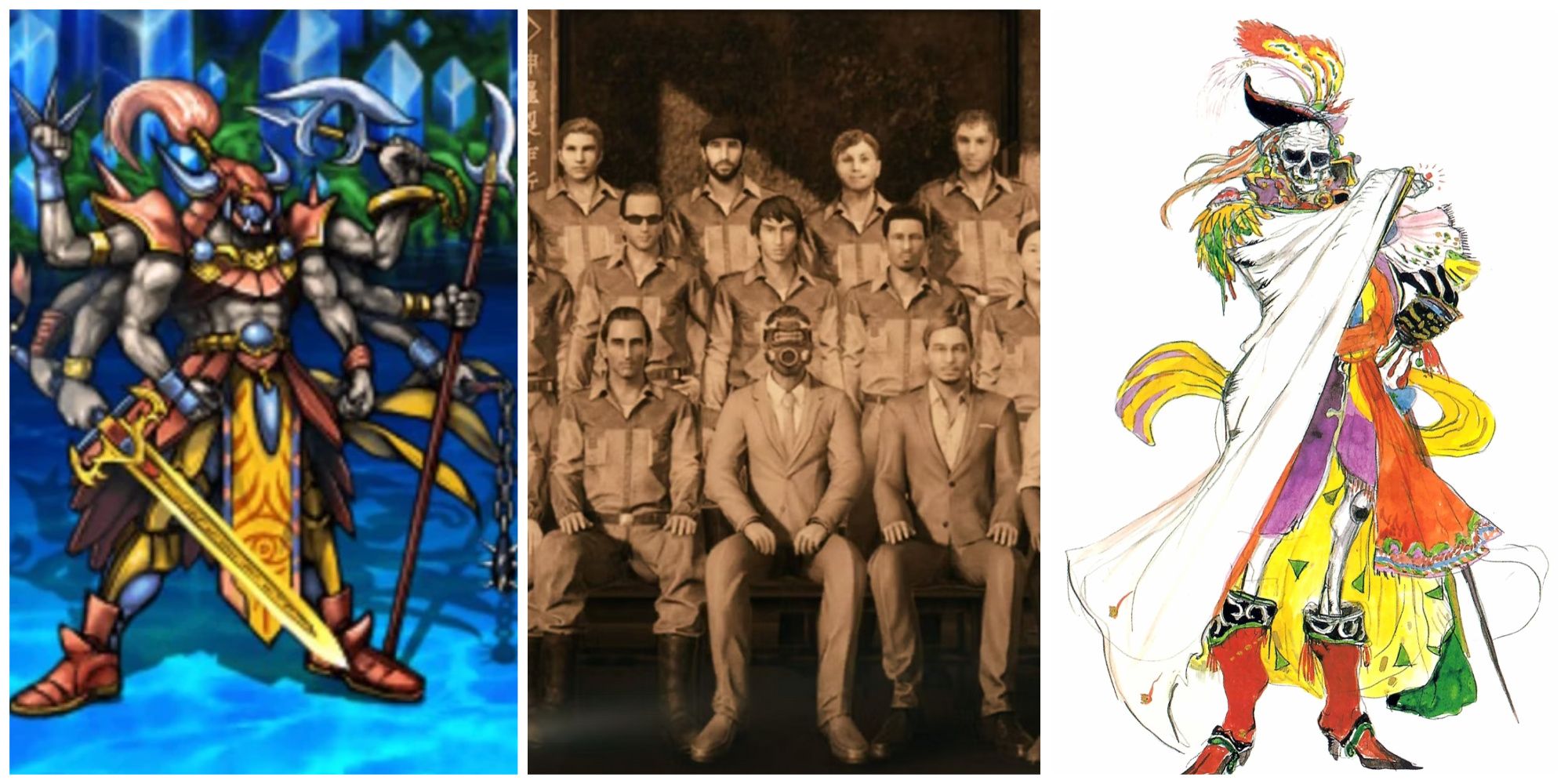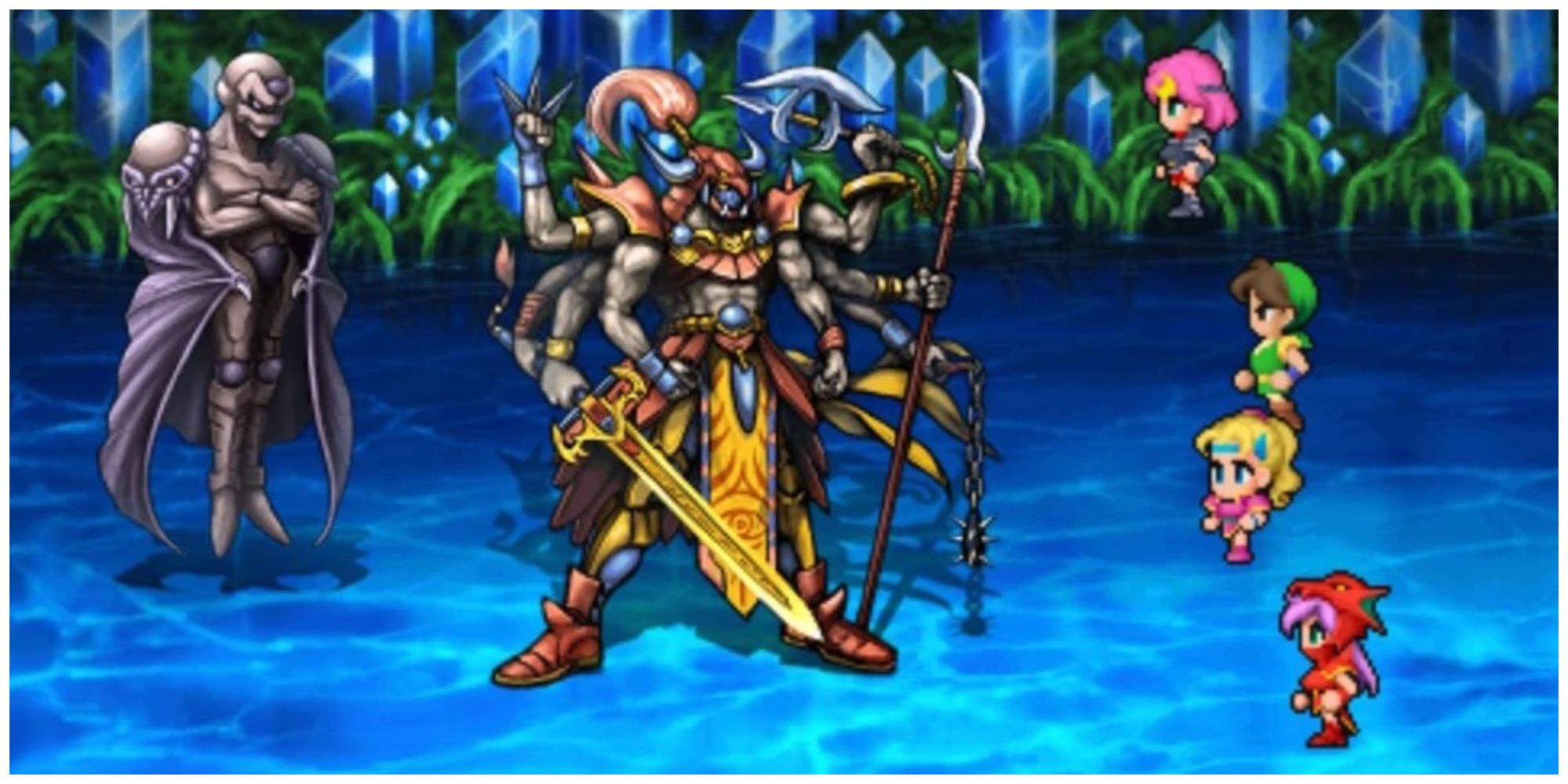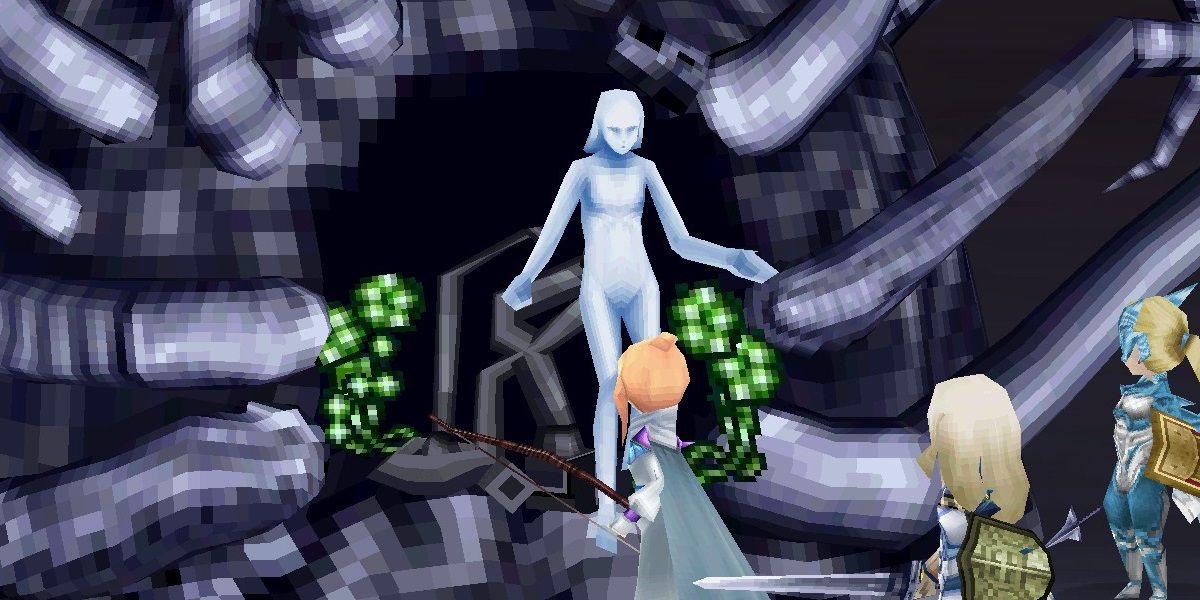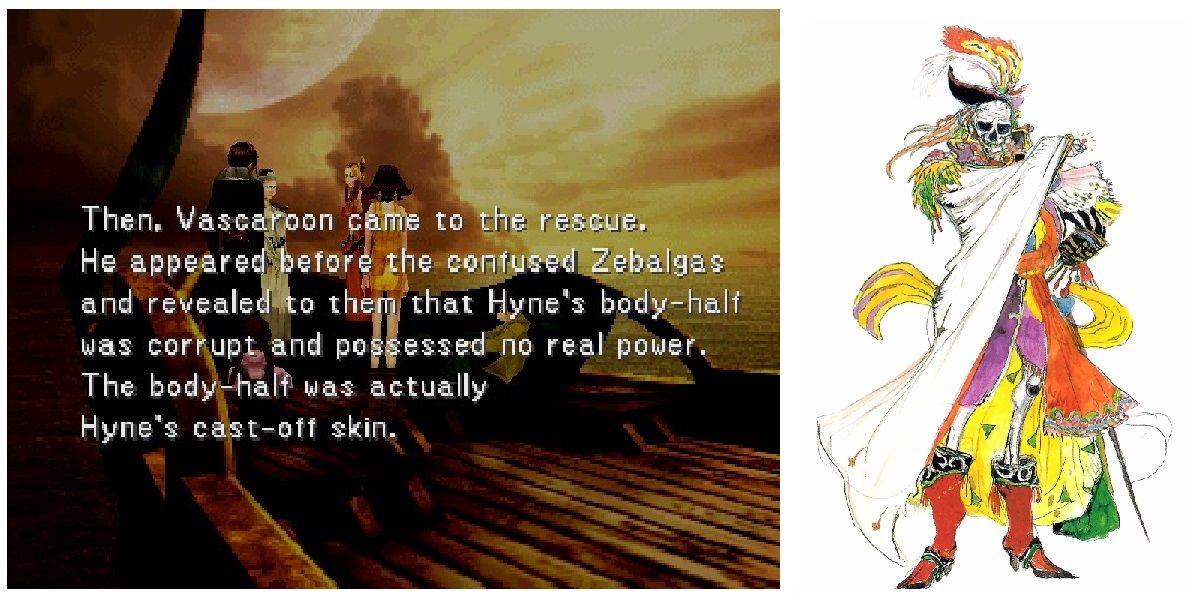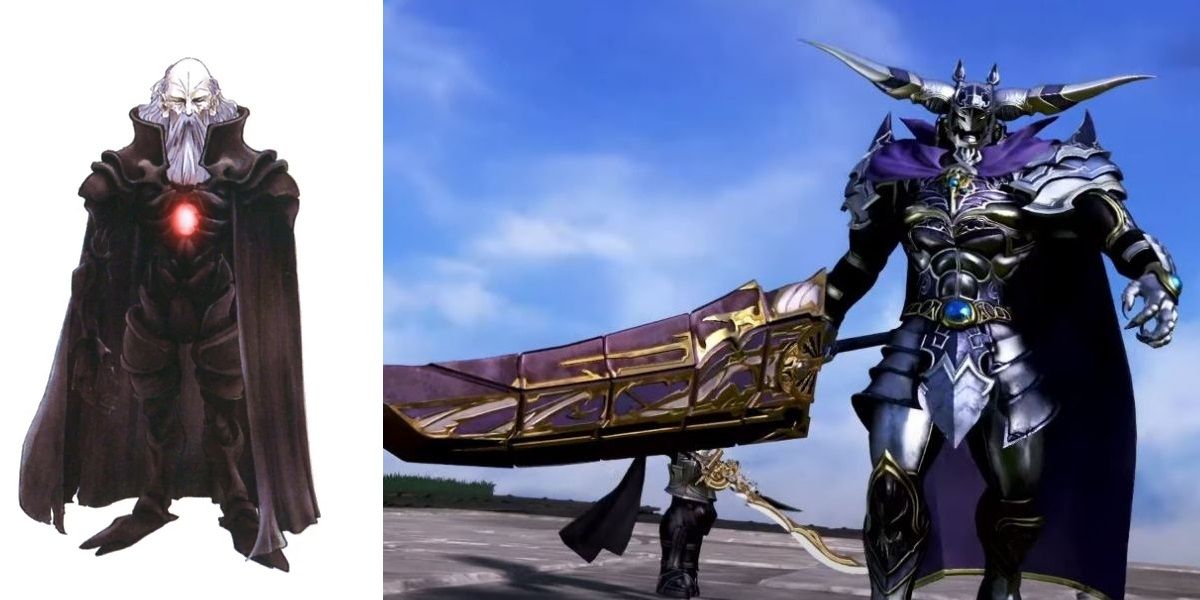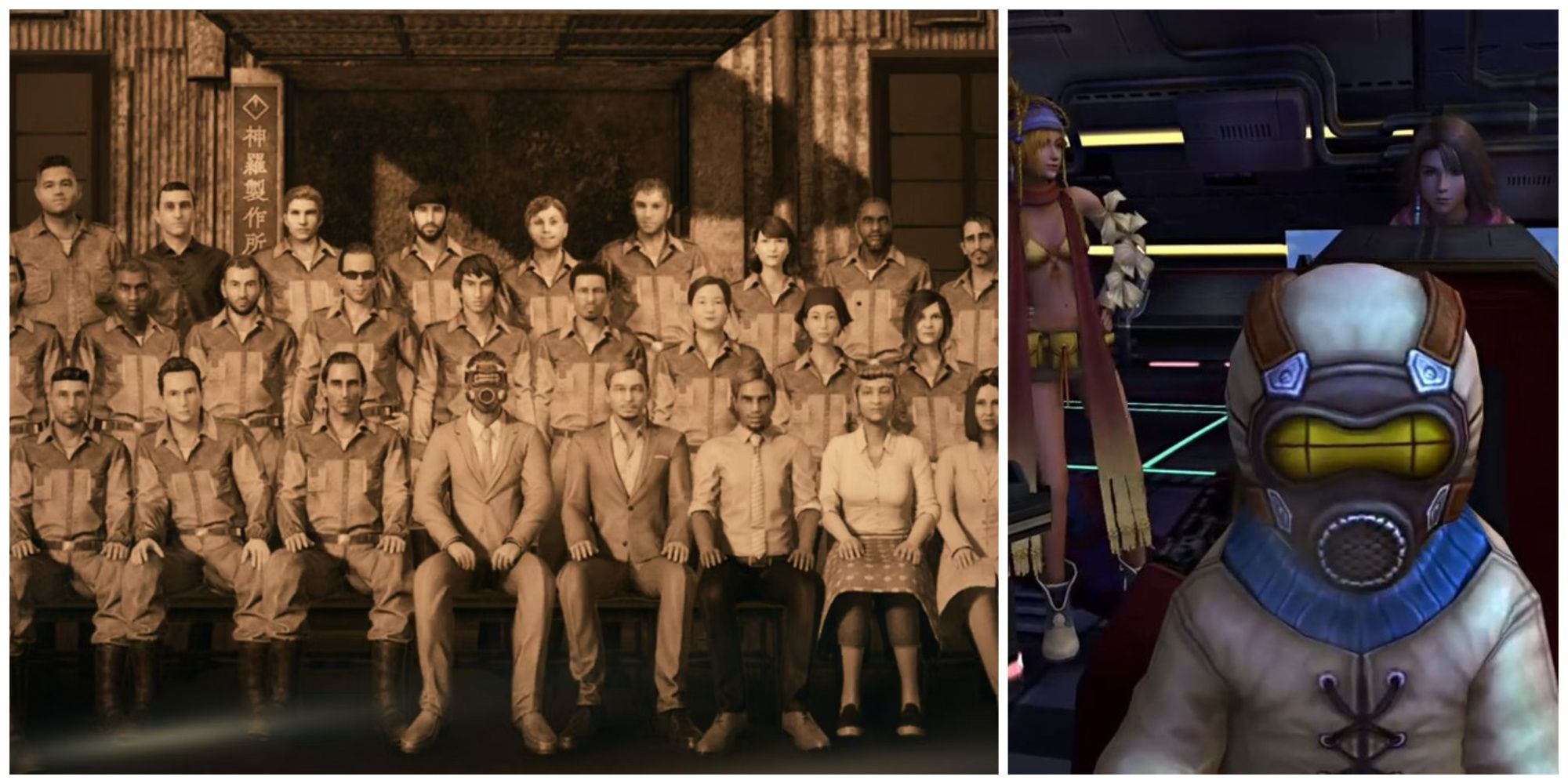Highlights
- The Final Fantasy games may be interconnected thanks to several hints of a multiverse, offering unique theories on a shared cosmology.
- Gilgamesh travels across the games through an "Interdimensional Rift," visiting other games throughout the series.
- Similarities between FF games suggest connections like recurring characters, trickster gods, and soul cycles, hinting at an interwoven universe.
As an anthology series, every Final Fantasy game can be played out of order, not counting direct continuations (such as Final Fantasy 10-2, the series' first sequel, or Final Fantasy 7 Rebirth, the second in the Remake trilogy). But while each game shares common themes and imagery, such as chocobos, darkness against light, or powerful crystals, the occasional tantalizing hints of an interconnected multiverse are made in the most easily overlooked of places.
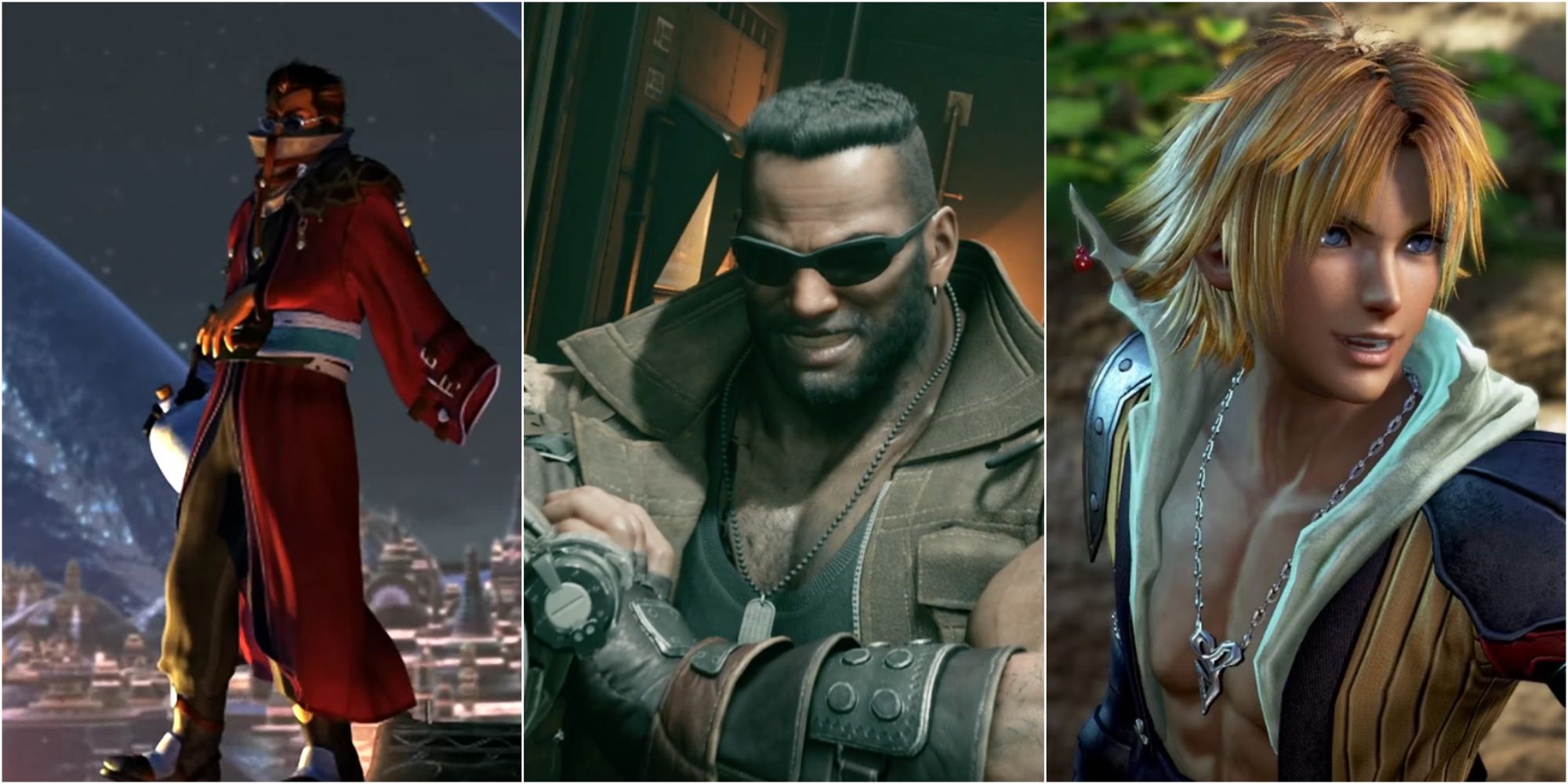
7 Most Chaotic Good Final Fantasy Characters
These Chaotic Good Final Fantasy characters are willing to break as many rules as it takes to make the world a better place.
These hints are dropped with extreme scarcity, with only one appearing every few games. Of course, while these theories have not been definitively confirmed (or denied) by Square Equix staff, they nonetheless offer compelling interpretations of a potential interwoven multiverse and a possible glimpse into the unifying theory behind Final Fantasy's rich and mysterious cosmology. At the very least, imagining how each world in the series could be connected is fun to think about! Beware of multiverse-sized spoilers ahead.
The Dimension-Hopping, Sword-Seeking Gilgamesh
Sent Through The Interdimensional Rift - Final Fantasy 5, Final Fantasy 8
- FF5 introduces the "Interdimensional Rift," through which many connections to other games have been made
- Gilgamesh is considered to be one of the very few truly recurring characters in the series
There are recurring character names throughout the series, but it is a generally settled fact that these are merely references and that they are all really separate people, with very few exceptions. However, one impossible exception might be Gilgamesh. First encountered in Final Fantasy 5, Gilgamesh is banished into the "Interdimensional Rift," a void said to exist "between the worlds." After returning to heroically sacrifice himself to take down Necrophobe for Bartz and the rest of the party, it is possible that he was absorbed and transported to other worlds by the Rift.
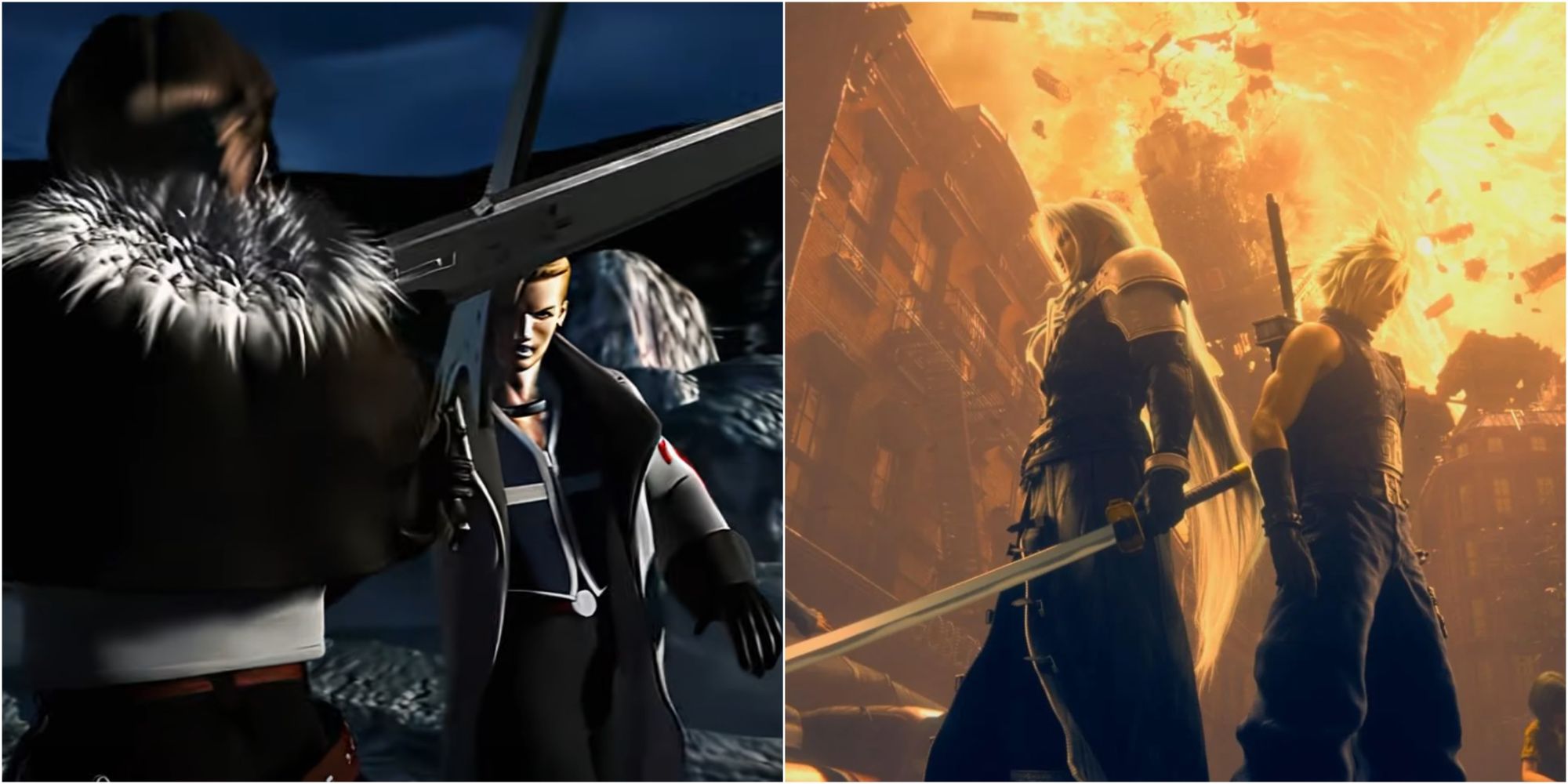
7 Best Rivalries In Final Fantasy, Ranked
The Final Fantasy series has had some pretty heated rivalries over the years, some of which have gone down as iconic within the history of gaming.
His many appearances throughout the game depict him with the same blustering personality and desire for powerful swords. In the Japanese version of Final Fantasy 8, when confronting Seifer after emerging from a portal and taking Odin's sword, he says, "You gave me the fourth one... Was it you? Ba-...?" This "Ba-" could allude to his rival, Bartz (Batsu in Japanese).
The Universe-Spanning Creator
Master Of Monsters From Distant Lands - Final Fantasy 4: The After Years, Various
- This technically advanced being collected enemies from across different words in the cosmos, resembling Final Fantasy characters
- The Creator used crystals similar to others seen throughout the series
Sometime before the events of Final Fantasy 4: The After Years, the last surviving member of a highly advanced civilization known as the "Creator" was driven mad by the destruction of its people. It adopted a nihilistic attitude to all other life. Whether before or after this galactic cataclysm, the Creator sought out knowledge about life forms throughout the universe, contributing to its immense power.
Having traveled the universe to understand creation and spoiling for a fight, the Creator sends monsters from each Nintendo-era Final Fantasy game to test the party, including Gilgamesh and Omega, other dimension-hopping entities. These familiar-looking crystals were not just fancy monster containers but data collection tools sent to worlds across the universe. Rather than drawing from parallel realities, shards, reflections, or dimensions, this implies that these beings' origin worlds were, in fact, in the same space (perhaps a galaxy) as the one seen in Final Fantasy 4 and The After Years.
A Skinless God, A Dragon, And A Lost Civilization
Escaping From Death By Shedding His Skin - Final Fantasy 3, Final Fantasy 8
- The Great Hyne and the magic user, Hein, share similar characteristics as tricksters
- The ruins at the Deep Sea Research Facility could reference Hein's floating continent, being roughly in the same map location
Hyne and Hein (both are spelled the same in the Japanese versions) share a few similarities when they appear in Final Fantasy 8 and Final Fantasy 3, respectively. "Appear" might be an overstatement in the case of FF8. Despite possibly being the puppet master and the most powerful big bad in the game, Hyne is only mentioned two times in easily missable dialogues. To cut a long story short, the human creator god began a war with his creations, and in fear of losing, he shed his body to escape, tricking the humans. He hid his real power in women, who became sorceresses, such as Edea and Ultimicia.
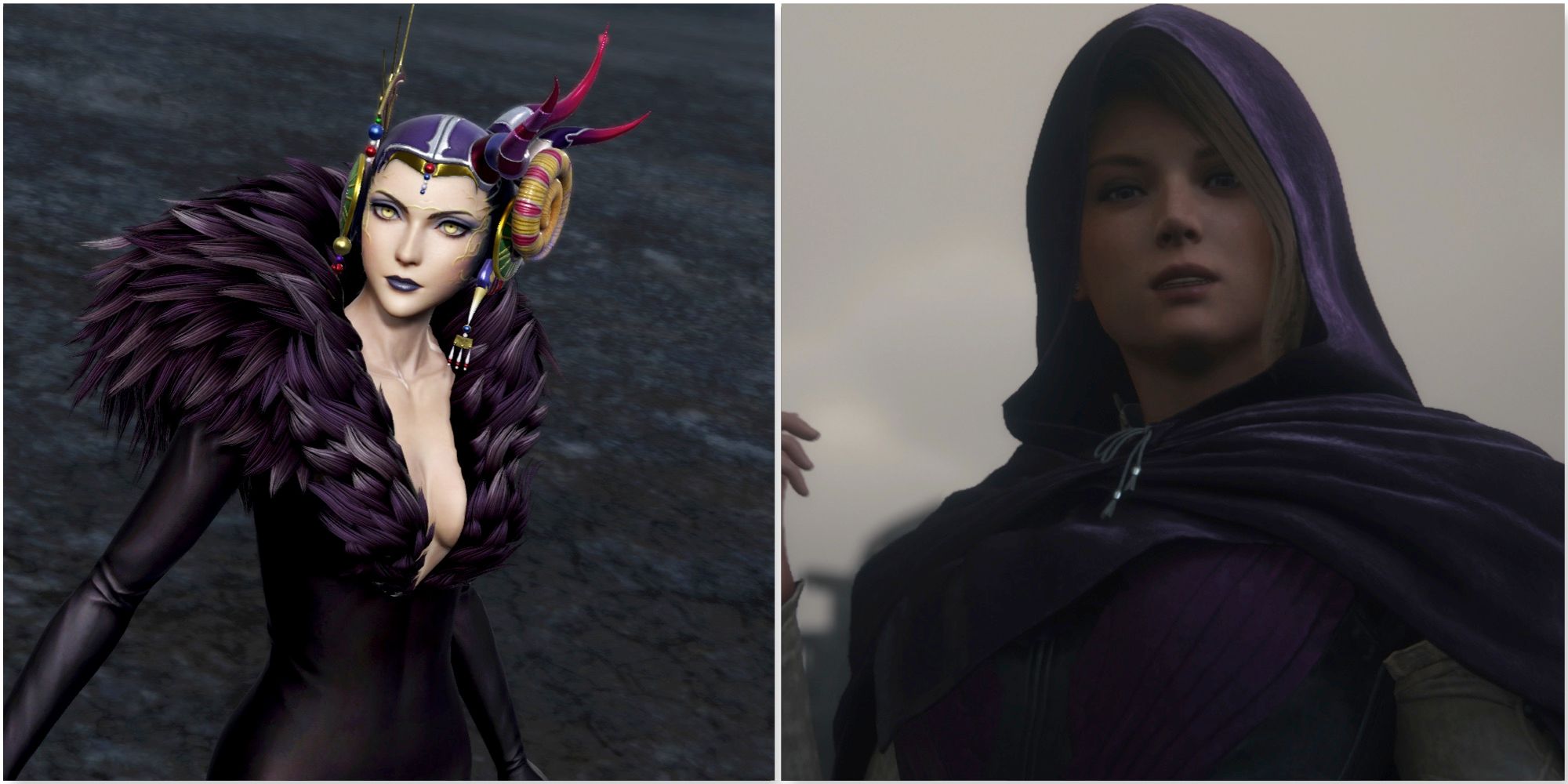
Final Fantasy: 5 Worst Mothers In The Franchise, Ranked
Like Disney, Square Enix's Final Fantasy has a penchant for awful mothers, with these moms from throughout the series being the absolute worst.
In Final Fantasy 3, there is a trickster magician who also happens to be a skeleton with the same name. He lives on a floating continent above the world and deceives the king and Warriors of Light on behalf of Xande, another death-fearing magic user. This Hein could also be the half of the body that Great Hyne escaped with. Interestingly, the map location of the floating continent and the site of the Deep Sea Research Facility (which houses the ruins of an ancient civilization) line up, along with a few other land mass features. Bahamut's home in Final Fantasy 3 was on the floating continent, and he can be acquired in Final Fantasy 8 in the Deep Sea Research Facility.
Garland, Volcano Dwarves, And The Four Fiends
Tangled Time Loops And Soul Cycles - Final Fantasy, Final Fantasy 9
- As well as having a similar design, Garland is also accompanied by the four fiends in their original incarnations
- The ending of Final Fantasy states that the heroes will once again face Garland in the future
Although Final Fantasy 9 is packed with loving homages to previous Final Fantasy games, three references stand out as being particularly potent as bridges to the original game. The first is a dwarf-filled volcano in both worlds (Mt. Gulug/Gulg) with the same music between the two games. The second is that there is a major villain in both games named Garland. In the original Final Fantasy, after the Warriors of Light defeat him and break his time loop, they return to their own time, where the epilogue states that Garland will be waiting for them. Since the Warriors of Light altered time, it is possible that reality shifted to accommodate, creating an alternate Garland.
In Final Fantasy 9, Mikoto, one of Garland's genomes (clones), states that her maker attempted to "take control of the cycle of souls" but failed, perhaps in reference to this previous time loop. The third reference potentially connecting the first and ninth games is the four fiends, who appear exactly the same in each entry. The ending of Strangers of Paradise (an alternate-reality sequel) may muddy the waters on Garland and the Four Fiends, but it also introduces its own connections to other Final Fantasy games (i.e., the appearance of the Emperor from Final Fantasy 2).
The Far-Away Electric Company Founder, Shinra
The Promised Farplane & Tapping Into Pyreflies - Final Fantasy 7, Final Fantasy 10-2
- A boy genius, Shinra, who expresses interest in harnessing natural energy in FF10-2, could be linked to the electric company in FF7
- Both the Farplane and Lifestream are places of great power where souls go to rest
Even before Final Fantasy 10's sequel, Final Fantasy 10-2, came around, there were some similarities between it and the cyberpunk world of Final Fantasy 7. Both games use spheres as magical energy sources ("materia" in Final Fantasy 7), and both have a physical location on the planet where the souls of the dead gather. In FF10-2, a child prodigy about the Gullwings' airship speculates that Spira's Farplane could be tapped as an energy source, but doing so would take "generations" (a fact that Yuna, despite having more to do in her life, seems to lament).
The child's name just so happens to be "Shinra," the very same as the tyrannical electric company depicted in FF7. Anyone who might consider this a cosmic coincidence should examine the picture above. The sepia photograph, seen on one of the walls during the Shinra Tower mission in Final Fantasy 7 Remake, depicts a man sitting front and center wearing an eerily familiar gas mask. Kazushige Nojima, the scenario writer for Final Fantasy 10-2, somewhat casually speculates that Shinra could have founded a group that eventually (1,000 years or so later) would have made their way to another planet with this energy-harnessing idea in mind.
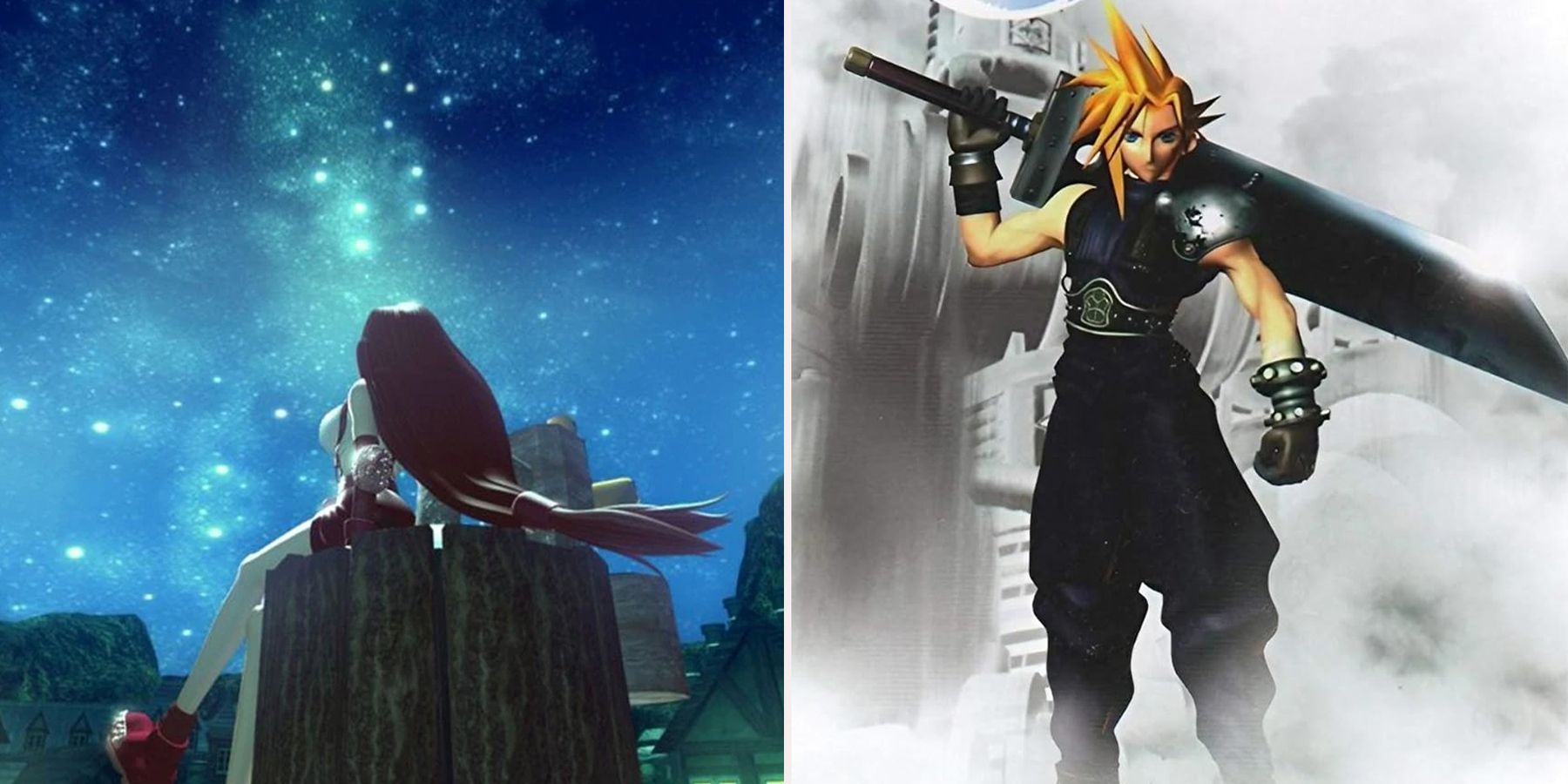
Final Fantasy 7 (1997): The Fates Of Every Playable Character
Being such a hit, Final Fantasy 7 spawned many spin-offs and follow-ups that expanded the stories of each party member that fans might not know about.

